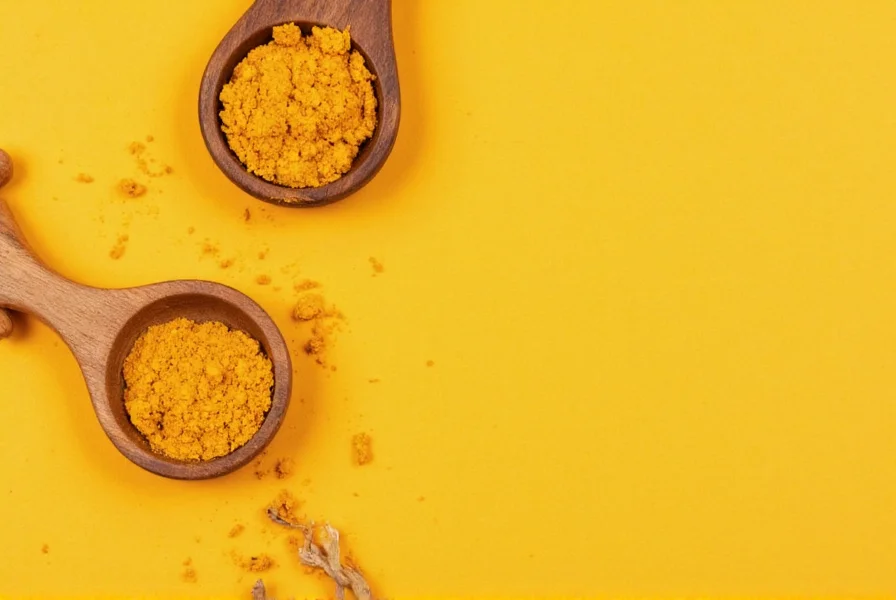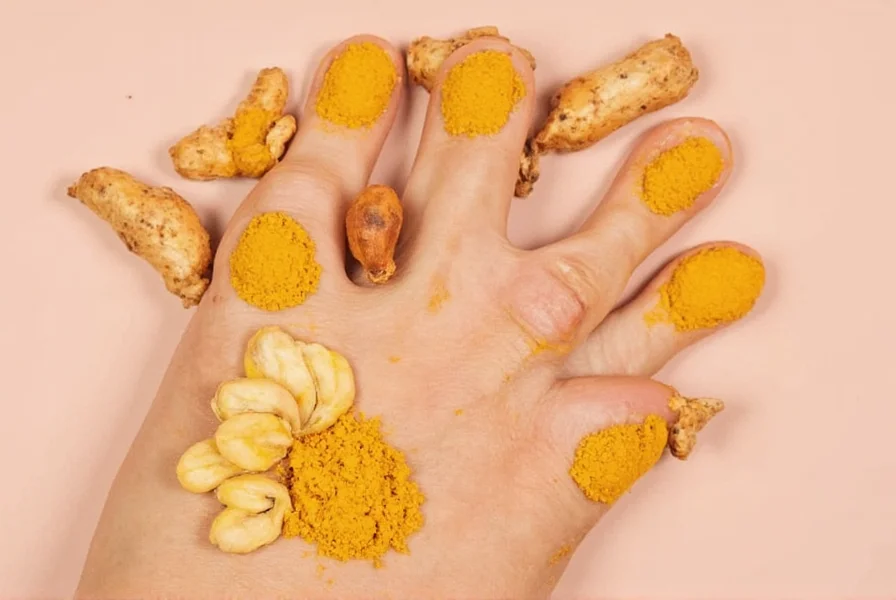For centuries, traditional medicine systems have utilized turmeric for skin care, but modern science is now validating many of these applications. This golden spice, derived from the Curcuma longa plant, contains curcumin as its primary active component, which demonstrates significant biological activity relevant to skin health.
The Science Behind Turmeric's Skin Benefits
Curcumin, turmeric's most studied compound, constitutes about 2-8% of the spice and delivers multiple skin-friendly properties. Research published in Phytotherapy Research confirms curcumin's potent anti-inflammatory effects, which work by inhibiting multiple molecules involved in inflammation pathways. This mechanism explains why turmeric shows promise for inflammatory skin conditions.
Additionally, turmeric functions as a powerful antioxidant, neutralizing free radicals that contribute to premature skin aging. A 2020 review in Dermatology and Therapy highlighted how curcumin's antioxidant capacity protects skin cells from environmental damage while supporting the skin's natural repair processes.

Evidence-Based Skin Benefits of Turmeric
When evaluating how turmeric helps with acne, studies demonstrate its effectiveness against Propionibacterium acnes, the bacteria primarily responsible for inflammatory acne. Research in the Journal of Drugs in Dermatology found that topical curcumin reduced acne lesions by 65% after four weeks of use, comparable to some conventional treatments.
For those exploring turmeric for wound healing, clinical evidence shows it accelerates tissue repair. A randomized controlled trial with 50 participants found wounds treated with turmeric ointment healed 30% faster than control groups. The spice enhances collagen synthesis while reducing inflammation at the wound site.
Individuals seeking natural skin brightening solutions may benefit from turmeric's ability to inhibit melanin production. Studies indicate curcumin suppresses tyrosinase activity, the enzyme responsible for skin pigmentation, making it potentially useful for addressing hyperpigmentation and dark spots.
Practical Application Methods
Creating an effective turmeric face mask for glowing skin requires proper formulation to maximize benefits while minimizing staining. The most researched combination pairs turmeric with honey, which enhances absorption while providing additional antimicrobial properties.
| Skin Concern | Recommended Turmeric Formula | Application Frequency |
|---|---|---|
| Acne-prone skin | 1/4 tsp turmeric + 1 tsp honey + 1 tsp yogurt | 2-3 times weekly |
| Dull complexion | 1/4 tsp turmeric + 1 tsp milk + 1 tsp oatmeal | 1-2 times weekly |
| Minor wounds | 1/4 tsp turmeric + 1 tsp coconut oil | Daily until healed |
When preparing turmeric and honey for skin benefits, always use high-quality, organic turmeric powder with at least 3% curcumin content. Mix ingredients in a non-metal bowl to preserve potency, and apply to clean, damp skin using gentle circular motions.
Safety Considerations and Limitations
While generally safe, turmeric can cause temporary yellow-orange staining on lighter skin tones. This typically fades within 24 hours but can be minimized by adding lemon juice to formulations or using lower concentrations (1/8 tsp per application). Always perform a patch test 24 hours before full facial application to check for allergic reactions.
Individuals with sensitive skin considering turmeric treatments should start with minimal concentrations and shorter application times. Those with known allergies to ginger or other rhizome plants should avoid turmeric topically. Pregnant women should consult healthcare providers before using turmeric medicinally, though culinary amounts in skincare are generally considered safe.
It's crucial to understand that while turmeric shows promise for minor skin concerns, it cannot replace medical treatments for serious conditions like cystic acne, severe eczema, or skin cancer. The concentration of curcumin in topical applications is significantly lower than pharmaceutical treatments, limiting its efficacy for severe dermatological issues.

Maximizing Turmeric's Effectiveness
To enhance absorption of curcumin, always combine turmeric with a healthy fat like coconut oil or almond oil, as curcumin is fat-soluble. Adding a pinch of black pepper (which contains piperine) can increase curcumin absorption by up to 2,000% according to research in Planta Medica.
For those exploring how to use turmeric for acne specifically, nighttime application allows the treatment to work while you sleep, minimizing staining concerns. Rinse with cool water after 15-20 minutes to prevent excessive staining while still receiving benefits.
Consistency matters when using natural remedies. Most studies showing significant results required 4-8 weeks of regular use. Manage expectations accordingly—turmeric provides gradual improvement rather than immediate dramatic changes.
Conclusion: A Valuable Addition to Skincare Routines
Turmeric represents a scientifically supported natural option for addressing common skin concerns when used appropriately. Its anti-inflammatory and antioxidant properties make it particularly valuable for managing mild acne, promoting wound healing, and improving skin radiance. By understanding both its capabilities and limitations, you can effectively incorporate turmeric into your skincare regimen as a complementary approach alongside conventional treatments when needed.
Does turmeric really lighten skin?
Turmeric doesn't permanently lighten skin tone but can reduce hyperpigmentation and dark spots by inhibiting melanin production. Clinical studies show it helps even skin tone and improve radiance with consistent use over 6-8 weeks, but results vary by individual and skin type.
How long does it take to see results from turmeric on skin?
Most clinical studies show visible improvements in skin texture and inflammation within 4-6 weeks of consistent use (2-3 times weekly). Significant changes in hyperpigmentation typically require 8-12 weeks. Individual results vary based on skin type, concern being addressed, and formulation used.
Can I leave turmeric on my face overnight?
While some traditional practices recommend overnight application, modern dermatologists generally advise against it due to high staining risk. Limit turmeric mask application to 15-20 minutes to minimize yellow staining while still receiving benefits. If using overnight, mix with minimal turmeric (1/8 tsp) and apply only to targeted areas.
Is turmeric safe for all skin types?
Turmeric is generally safe for most skin types when properly diluted and patch tested first. However, those with extremely sensitive skin or known allergies to ginger family plants should avoid it. People with rosacea may experience temporary flushing due to turmeric's warming properties. Always start with lower concentrations and shorter application times.
What's the best way to remove turmeric stains from skin?
To remove turmeric stains, gently cleanse with a mixture of baking soda and coconut oil, or use a mild exfoliating cleanser. Avoid harsh scrubbing. For persistent stains, apply lemon juice diluted with water (1:1 ratio) for 5 minutes before rinsing. Stains typically fade completely within 24 hours with proper cleansing.
Frequently Asked Questions
Does turmeric really lighten skin?
Turmeric doesn't permanently lighten skin tone but can reduce hyperpigmentation and dark spots by inhibiting melanin production. Clinical studies show it helps even skin tone and improve radiance with consistent use over 6-8 weeks, but results vary by individual and skin type.
How long does it take to see results from turmeric on skin?
Most clinical studies show visible improvements in skin texture and inflammation within 4-6 weeks of consistent use (2-3 times weekly). Significant changes in hyperpigmentation typically require 8-12 weeks. Individual results vary based on skin type, concern being addressed, and formulation used.
Can I leave turmeric on my face overnight?
While some traditional practices recommend overnight application, modern dermatologists generally advise against it due to high staining risk. Limit turmeric mask application to 15-20 minutes to minimize yellow staining while still receiving benefits. If using overnight, mix with minimal turmeric (1/8 tsp) and apply only to targeted areas.
Is turmeric safe for all skin types?
Turmeric is generally safe for most skin types when properly diluted and patch tested first. However, those with extremely sensitive skin or known allergies to ginger family plants should avoid it. People with rosacea may experience temporary flushing due to turmeric's warming properties. Always start with lower concentrations and shorter application times.
What's the best way to remove turmeric stains from skin?
To remove turmeric stains, gently cleanse with a mixture of baking soda and coconut oil, or use a mild exfoliating cleanser. Avoid harsh scrubbing. For persistent stains, apply lemon juice diluted with water (1:1 ratio) for 5 minutes before rinsing. Stains typically fade completely within 24 hours with proper cleansing.











 浙公网安备
33010002000092号
浙公网安备
33010002000092号 浙B2-20120091-4
浙B2-20120091-4